All Images
Media Advisory 06-010
Polar Neutrino Observatory Takes a Big Step Forward
This material is available primarily for archival purposes. Telephone numbers or other contact information may be out of date; please see current contact information at media contacts.
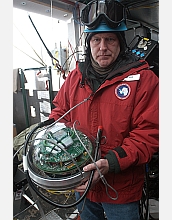
Robert Paulos, Associate Director for Engineering and Project
Support, holds one of the optical sensing modules that comprise the detector.
Credit: Peter West, National Science Foundation
Download the high-resolution JPG version of the image. (2.7 MB)
Use your mouse to right-click (Mac users may need to Ctrl-click) the link above and choose the option that will save the file or target to your computer.
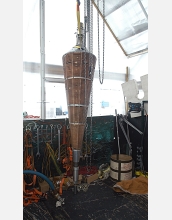
A firn drill is used to melt snow at the surface in preparation for a novel hot-water drill that is used to make the deep holes for strings of light sensors.
Credit: Peter West, National Science Foundation
Download the high-resolution JPG version of the image. (2.3 MB)
Use your mouse to right-click (Mac users may need to Ctrl-click) the link above and choose the option that will save the file or target to your computer.
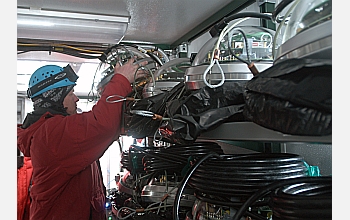
A worker takes a sensor from the shelves at the South Pole drilling site.
Credit: Peter West, National Science Foundation
Download the high-resolution JPG version of the image. (2.7 MB)
Use your mouse to right-click (Mac users may need to Ctrl-click) the link above and choose the option that will save the file or target to your computer.
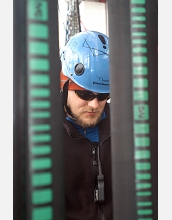
Terry Bensen, with the IceCube project, watches the drilling equipment come up from the hole.
Credit: Peter West, National Science Foundnation
Download the high-resolution JPG version of the image. (2.5 MB)
Use your mouse to right-click (Mac users may need to Ctrl-click) the link above and choose the option that will save the file or target to your computer.
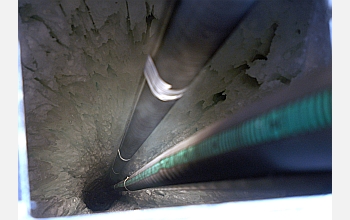
Detectors are frozen in place nearly 1.5 miles deep in the ice.
Credit: Peter West, National Science Foundation
Download the high-resolution JPG version of the image. (1.5 MB)
Use your mouse to right-click (Mac users may need to Ctrl-click) the link above and choose the option that will save the file or target to your computer.


